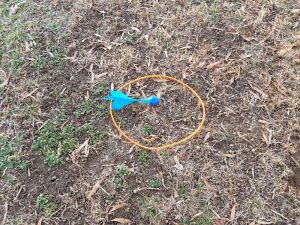Leaks are a severe problem in ponds, and you must deal with them immediately. Let us help you determine leakage of your leaking pond once and for all.
They will likely turn the areas near your pond muddy and erode the chances of your pond’s success.
Therefore, if you are suspicious that your pond is leaking, you find it and get it fixed.
Identifying leaks can be as simple as checking the surroundings or using dye tracers.
Whatever method you prefer, here is how you can find leaks and repair them to keep your pond working efficiently.
How To Find A Pond Leak
Pond leaks can be elusive, frustrating, and incredibly annoying.
In extreme cases of leakages, your fish may die.
In addition, your pond equipment, like pumps, may fail when the water levels drop below a certain level.
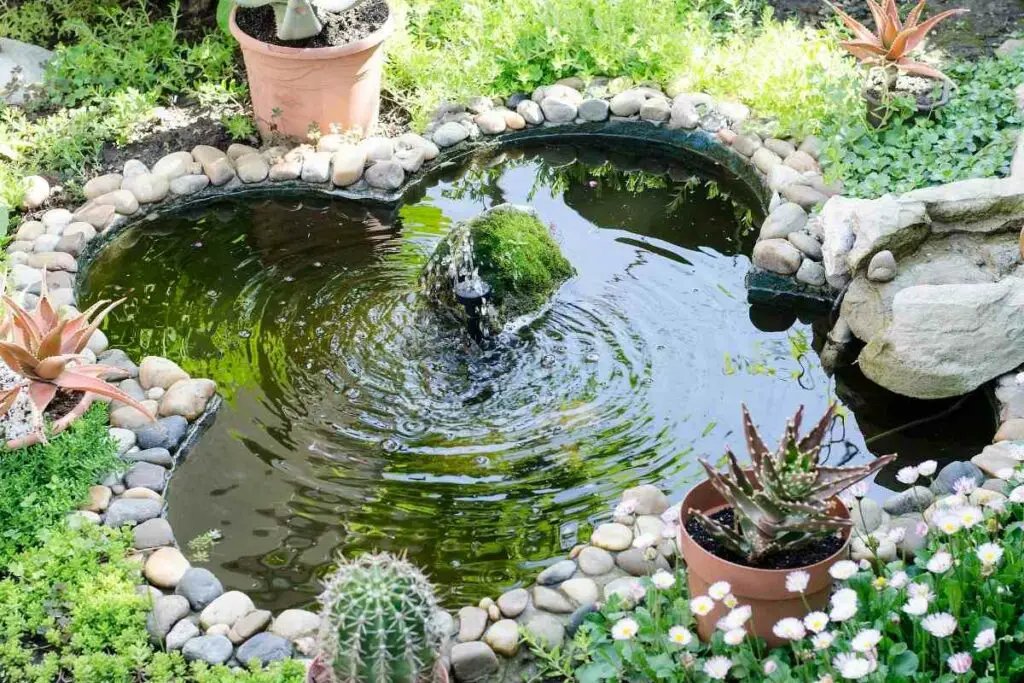
Even when you hire the best builders in town, you are not immune to a pond leakage.
If the leakage does not occur due to a hole in your liner, it could be due to wildlife, neglected filters, equipment failure, and gaps in your pond liners.
Since the leakages in a pond can vary in nature, it becomes challenging to use one method to detect all leaks.
There are three main methods of finding pond leaks.
Dropping water levels (Leaks)
Checking the water level is one of the most straightforward ways to detect a leak in your pond.
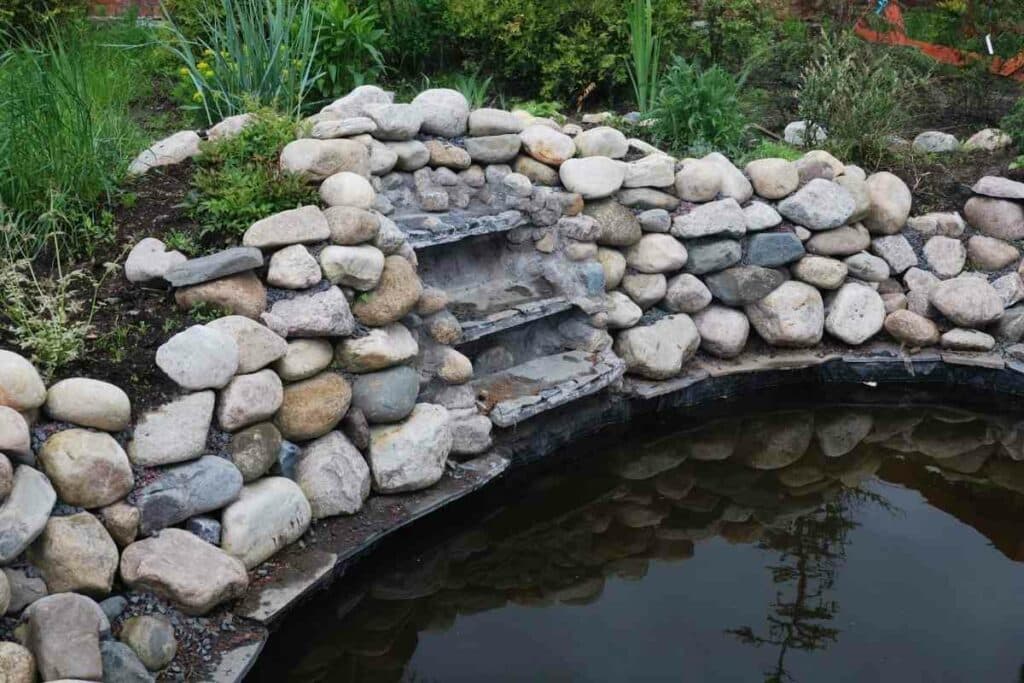
The method works in 3 simple steps:
- Fill up your pond to an appropriate level and mark it. Once filled, turn off the water pumps or any water features on the pond. When all the pumps are off, you should cut off the pond by closing the gate valve leading to the filters. When doing so, ensure the aeration is sufficient for your fish.
- Wait for 24 hours. As you wait, take note of the weather and how low the water levels drop. If the water levels fall significantly below the mark, you can be confident that your pond is leaking. However, if you do not lose a lot of water, it could be evaporation, or the leakage was not in the pond but in the pipes or pump’s filter. If so, you can now focus on the pond’s water features.
- You can let your pond continue to leak to find the leak’s exact location. When the water level stops dropping, there is a leak on that level. However, this method is inefficient, as it could take days to find the leakage.
When the water levels stop dropping, you should examine the water line.
If you do not have a skimmer along the line, chances would be that your pond is losing water through other perforations.
For Example – If the water stops leaking along the rock line, you must dig out the rocks and check for holes in the dam liner.
Dye tracers
Another way to find a pond leakage in your pond is to use dye tracer tablets.
These tablets have a color pigment that stains the water. The dissolved dye then moves towards the source of the leak.
Using dye tracers is an easier way to find the actual location of a leak.
Depending on the color of your water, you can choose a:
- red
- yellow
- blue
- or orange dye tablet
Clearwater works well with any tablet, but yellow or green dye tracers work best for brown water.
To use the dye tracer, place the tablets on the pond’s edge at equal distances. If the tablets are bigger, increase the spacing.
Wait 5-8 minutes for the tablets to completely dissolve in the water, and observe the pond water to determine where the colored water is flowing.
Heads Up! Since the dyes have a different density than water, you will notice them moving out of the pond in little streams. Once you locate the point where they flow out, you will have found your leak.
Mud puddles
The last way to identify a leakage in your pond is to look for wet areas near the pond.
If your pond leaks, the area near the leak will have a mud puddle.
That is a good start because you can focus your search near the mud.
How To Determine Your Pond Is Leaking
Pond leakage can happen within or outside the pond.
When it occurs within the pond, it could be caused by torn dam liners, loose soil, cracks on the clay linings, etc.
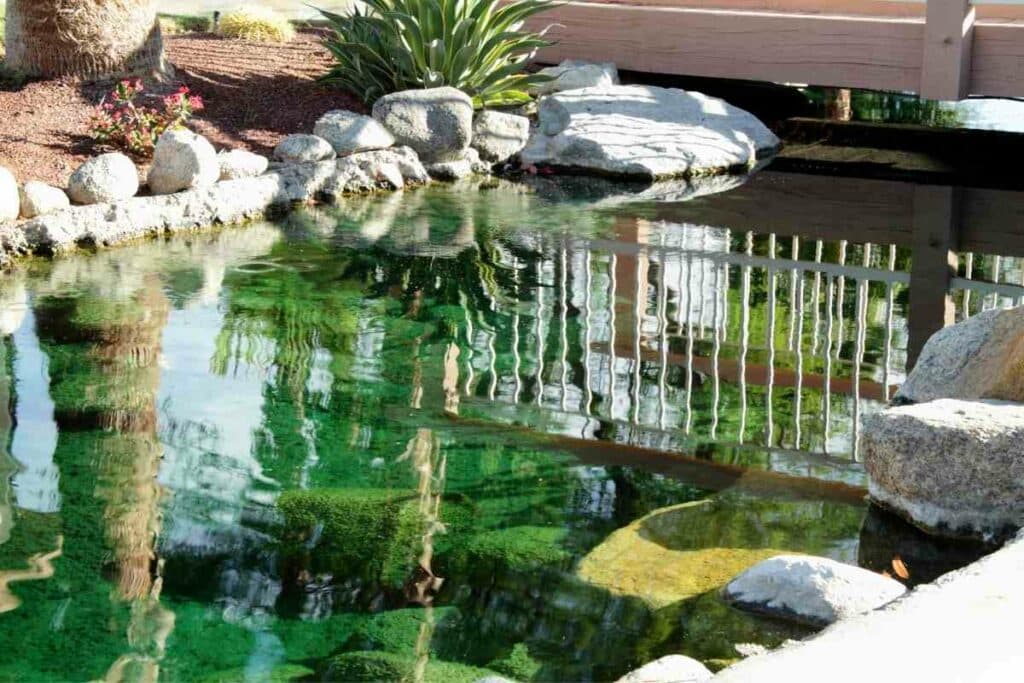
Outside the pond, the leakage could be due to the piping works. The most common ones are near the waterfall, skimmers, and filters.
There are two main types of pond leaks:
- Static– This usually happens when the water is not flowing. Typically, these leaks are on the walls or the base of the pond. Static leaks occur due to rips or tears on the liner and evaporation.
- Dynamic– This happens when water is flowing in or out of the pond. The main culprits for dynamic leaks include busted pipes, pump filters, or waterfalls. Low pond edges are also a common reason for dynamic leakages.
There are countless reasons why a pond could be leaking—the soil type, poor construction, and material deterioration are some of them.
The pond can also leak in different places, making it hard to determine the leakage point.
However, there are obvious signs to look out for.
Some of these include:
- Formation of wet areas close to the pond
- Decreasing water levels
What Could Cause Water Levels To Drop In Your Ponds?
Apart from leaks, your pond’s water levels can drop due to many reasons such as the following.
Evaporation
Evaporation happens when water in your pond turns to vapor and rises, thus escaping from your pond.
Depending on where you are, you may lose more or less water through evaporation.
If you live in areas with moderate temperatures and high humidity, you can lose 1 inch of water from your pond every week.
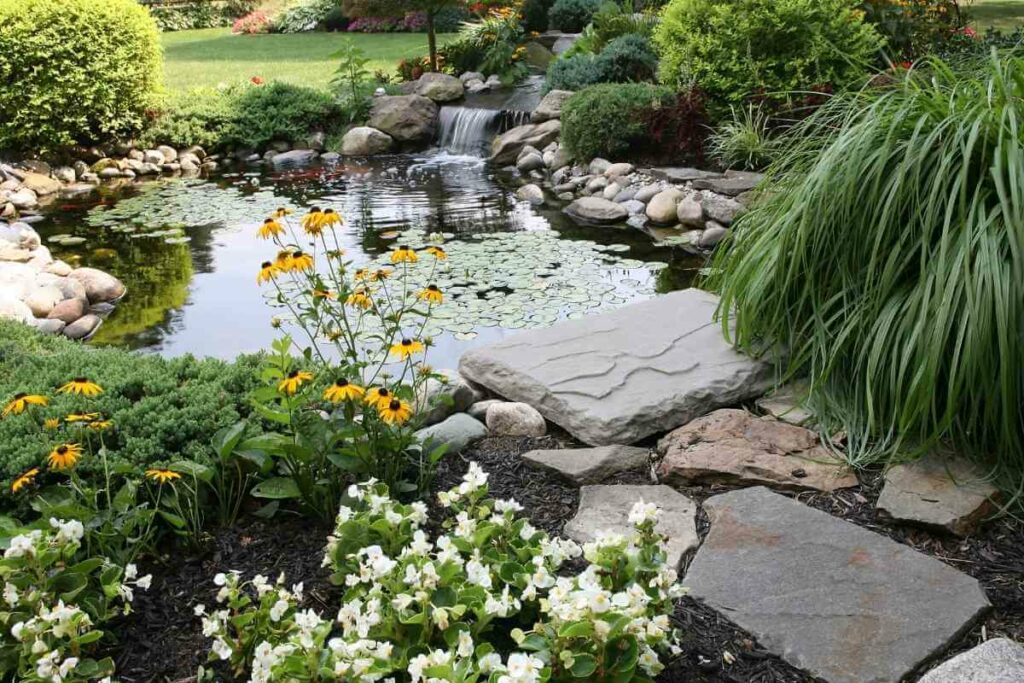
However, if you live in places with high temperatures and low humidity, you can expect to lose at least 3 inches of water from your pond through evaporation weekly.
If you have a waterfall in your pond, the water loss increases drastically because cascading waterfalls lose about 2 inches or more daily.
Did You Know? If the water splashes around or flows, then the rate of evaporation increases. The same applies to larger ponds with more surface area exposed to heat.
Low pond edges
Low pond edges are a common problem for new ponds.
If there is a low edge, maybe due to erosion caused by a stream or a waterfall, water starts leaking from the pond. You will notice the water level in the pond basin decreasing.
On the other hand, if soil settles at the bottom of the pond, then the depth decreases.
How To Repair Pond Leaks
The most effective way to fix leaking ponds is to seal leakages off.
How you repair your pond will depend on the type of leak.
Today, you can consider repairing a leak in the liner, clay lining, or concrete.
Repairing a leak in the pond liner
You can repair a leak through several effective methods.
However, the choice of method will depend on the size of the hole on the liner.
If the hole is less than 5-inches wide, then a simple patch kit or underwater pond sealant will do the trick.
When using an underwater sealant:
- clean the surfaces with the tear
- apply the sealant directly on the tear
- and leave it for 24 hours to cure
You do not need to drain the water from the pond.
However, drain the water from the pond when using a patch kit.
Once the torn surface is exposed, clean it with a solvent wipe. You will also need a scrub sponge to scrub the damaged area.
The next step is removing the release paper on the patch and using a seam roller to tightly bond the patch onto the damaged area.
If the hole is wider than 5 inches, you should consider replacing the liner.
How to fix a clay pond leak
If you notice cracks in your clay pond, you should use bentonite to seal them off your pond.
Bentonite is a clay compound that expands when exposed to water.
Therefore, it expands and fills the cracks in the pond, preventing it from leaking.
To apply the bentonite:
- Drain the pond to expose the cracked surfaces.
- Apply the bentonite as per the manufacturer’s directions on the container.
- Refill the pond with water to the desired level.
- Monitor the pond to see if you sealed off all cracks.
Fixing concrete pond leaks
A non-toxic pond sealant is the best choice to seal leaks in your concrete pond.
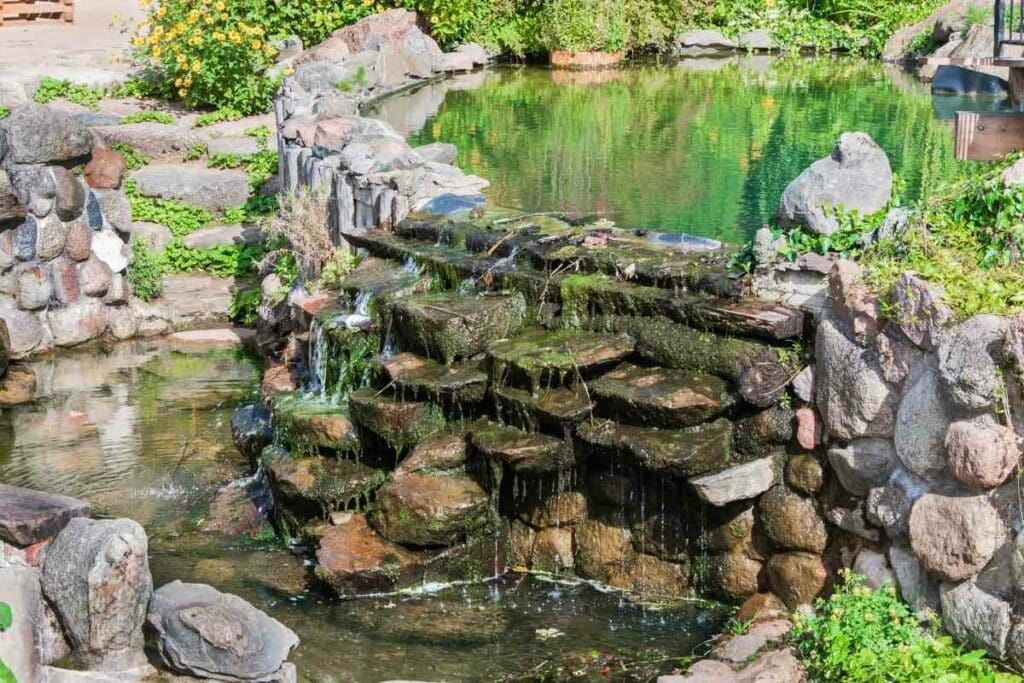
To do so:
- Prepare the surface with the crack as per the manufacturer’s guidelines.
- Mix the sealant with a hardener-if you need to.
- Apply the sealant to the cracks.
- Give it around 24 hours to cure.
- Refill your pond and check if you sealed the leaks successfully.
Final Thoughts
A pond leakage can be annoying and expensive.
If you have fish in your pond, leakages can cost you your precious aquatic life and even cause mud puddles in your backyard.
Determining their presence is simple, as you only need to observe the water levels.
However, finding their exact location and repairing them may be difficult.
Cracks are difficult to locate, and perforations on your dam liner are even harder to spot.
Luckily, you can use techniques to speed up the process of pond repair.
Once you find the leak, fixing them is relatively easy.




